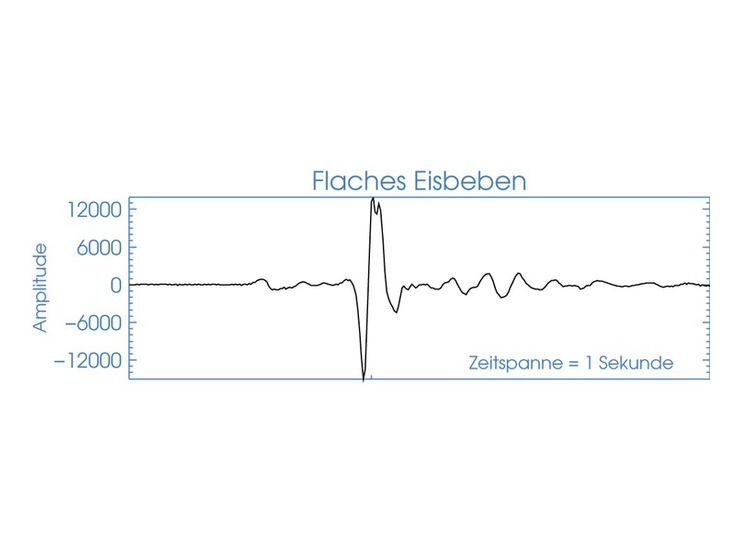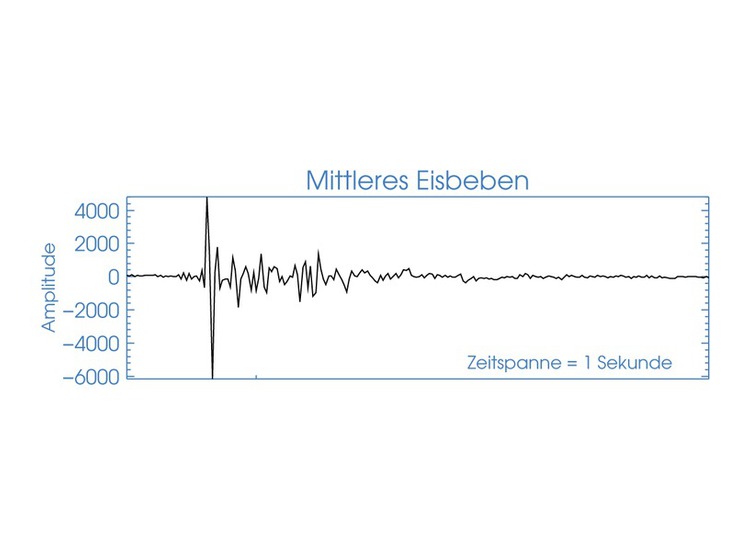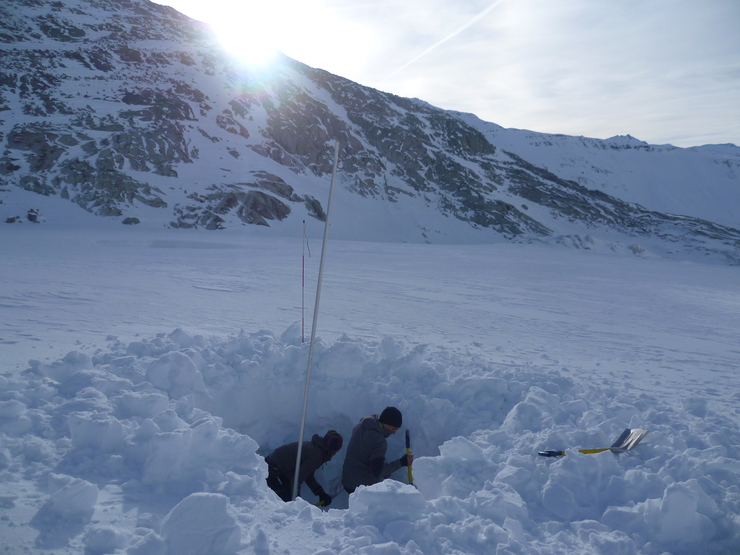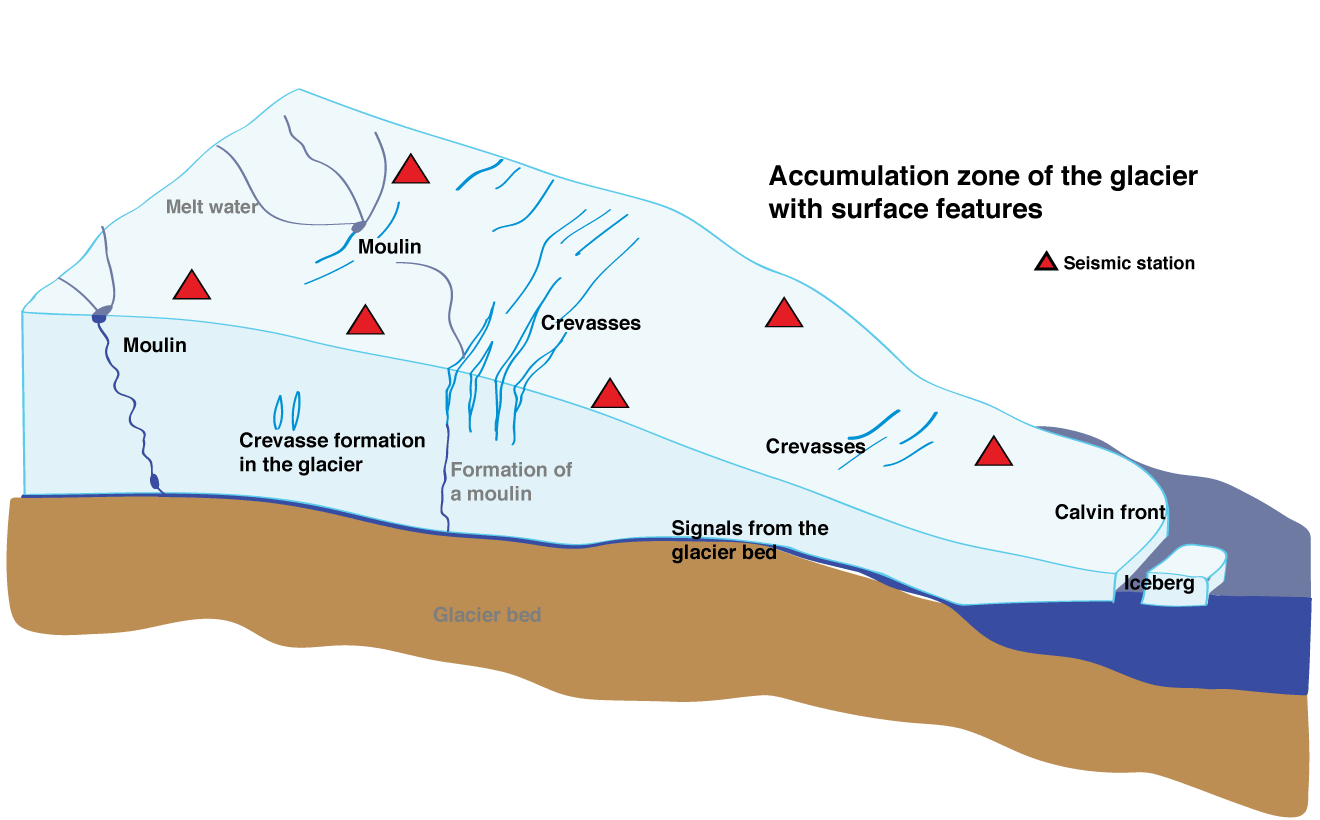
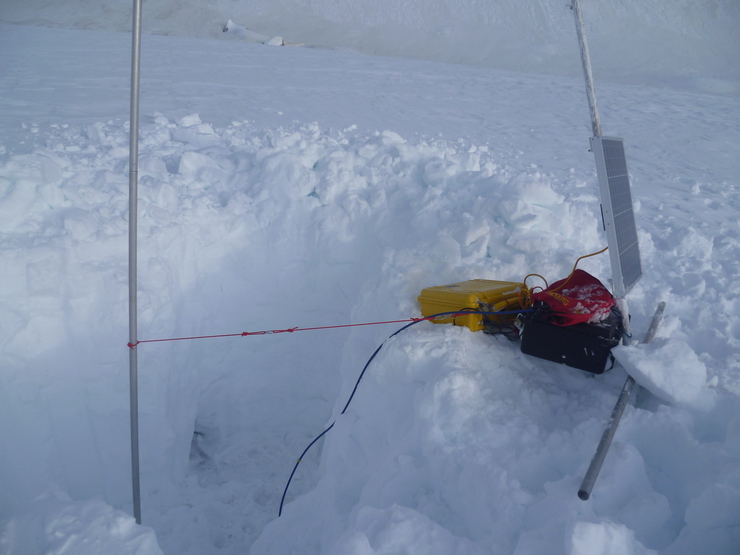
Excavated seismometer devices
The seismometer is located in the ice in the snow hole. The other devices for data recording and electricity supply are laid on the surface of the snow so that the battery can be recharged by the solar panel and the boxes do not need to be excavated down to the glacier ice for the next visit.
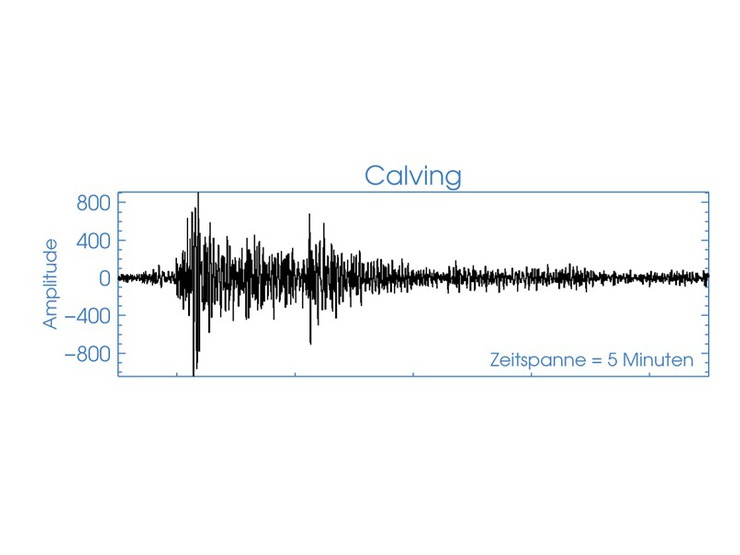
A waveform created by the calving of the Jakobshavn Isbræ (with chunks of ice breaking off into the sea), a glacier of the Greenland ice sheet. The waveform was recorded approximately 30 kilometers away from the calving front with seismometers installed on the ice.
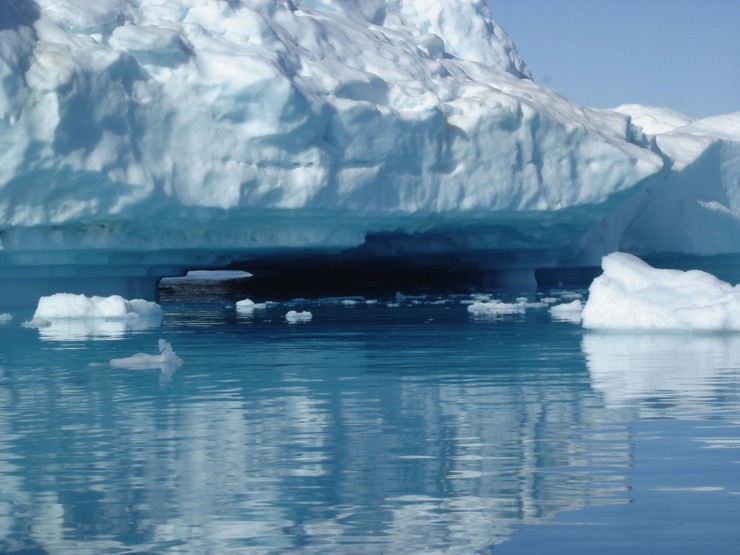
A floating iceberg in the ice fjord near the KULLO station and the village Kullorsuaq in northeastern Greenland. Kullorsuaq is inhabited by some 400 Inuits and is one of the northernmost settlements in the world (74°N).
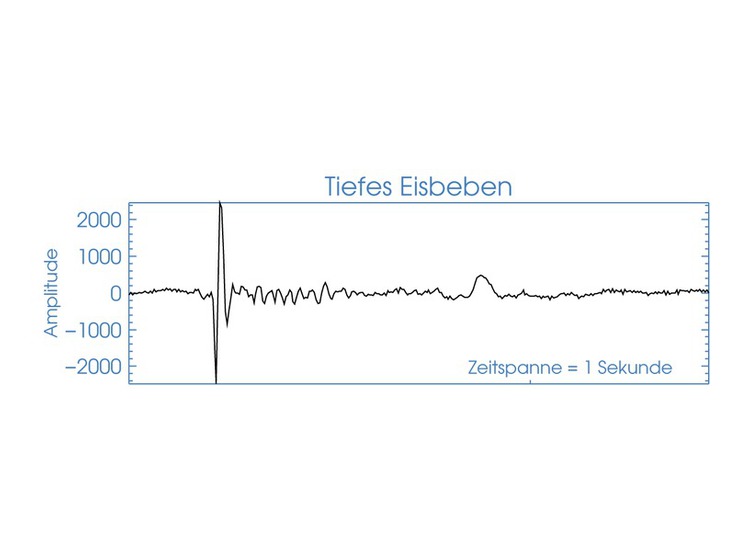
Waveform of an ice quake that occurred approximately 600 meters below the surface of the ice in the area where the ice reaches the glacier bed. The second, smaller deflection after approximately two-thirds of the signal belongs to the same ice quake (S-wave).
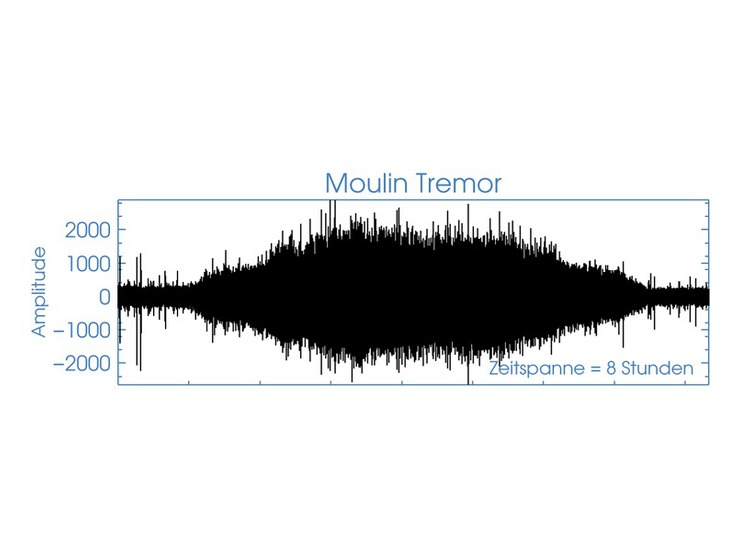
The pattern of this waveform is known as a tremor. The recording shows a period of eight hours during which the tremor was initiated. The tremor is suspected to have originated in a moulin and is most likely associated with the geometry of underground channels and the incoming water.
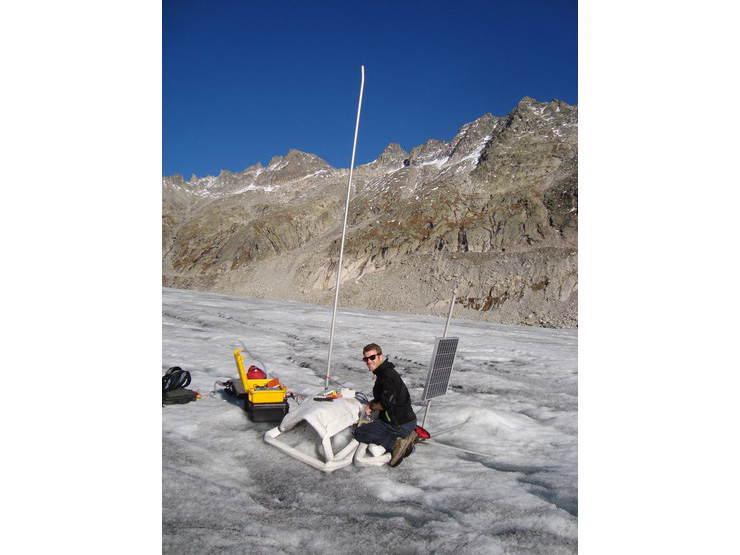
Preparing the seismometer for the winter
The long pole allows finding the station below several meters of snow (October 2012).

Seismometers in the ice
Seismometers set up in an ice hole on the Greenland ice sheet in August 2011. The seismometers are covered with an insulating sheet. The sheet helps to reduce the melting of the ice, so that the seismometer remains stable and stands straight in the ice for longer. The effect can be seen well from the platform of ice that has formed around the seismometer.
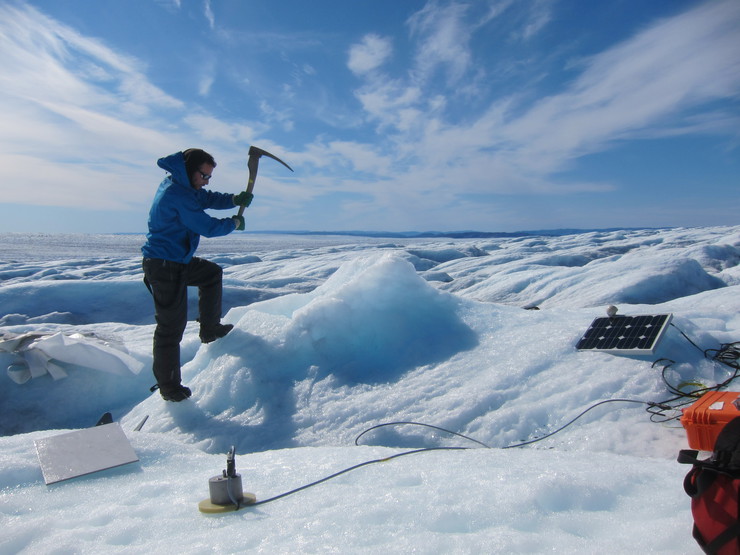
Maintaining a seismic station
Due to the melting of the ice, the seismometers must be repositioned almost daily, with the surface being worked with a ice axe. In the foreground the seismometer, which has been removed and will be replaced in the hole.

Installation of a borehole seismometer
Installation of a borehole seismometer in the Rhône Glacier, May 2012. In the background the instrument for data storage (green device in orange box) and the rear of the solar panel for the electricity supply.



